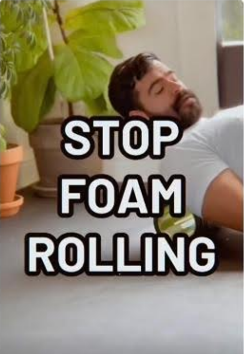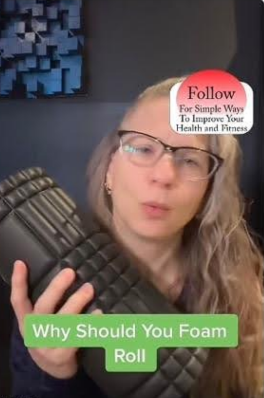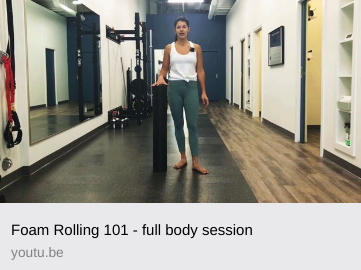If you have any form of social media, I’m sure you are no stranger to seeing a post like this…

only to be directly followed by a post like this…

Foam rollers are a staple piece of equipment found in nearly every gym around the world. They can, however, be a hotly debated topic in the rehab and fitness world. Reason being, that there have been plenty of bold claims and counterclaims thrown around about what it can and can’t do. While some swear that it should be in everyone’s daily routine, others say that you are simply wasting your time. In this article, I will briefly cover the arguments made on both sides, the evidence behind the arguments, and my personal stance on foam rolling and whether it’s worth adding to (or keeping in) your routine.
What is foam rolling and how does it work?
Foam rolling is a method of self-massage where you use a dense roll or another hard object to place pressure on a target tissue, digging around for areas that are particularly uncomfortable or feel “tight”, and rolling over the area. As far as how it works, this is still a relatively unresearched and questionable area – not to mention, it depends on what you mean by “work”.
There have been several arguments of foam rolling’s efficacy that have evolved over the years since its rise in popularity in the 80s. The original school of thought for foam rolling was based on the idea that rolling out tissues can ‘release’ bundles of fascia (the connective tissue that surrounds muscles and organs), and that these bundles are the reason behind muscle tightness and pain. Additionally, rolling was proposed to create changes in the physiological structure of our muscles, thus creating an effect that would produce permanent changes in pain and flexibility. Since then, a lot of research has debunked the original theory behind foam rolling and created some controversy between health and fitness professionals. Here, we will break down the ‘cans’ and ‘can nots’ of foam rolling based on the latest evidence.
What can it do?
- Temporarily increase flexibility without having a negative effect on muscle performance
- Reduce muscle and joint sensitivity
- Reduce post-exercise muscle soreness (DOMS)
- Reduction in tone through tissue feedback
What can’t it do?
- Create permanent changes in muscle length
- Manipulate fascia
- (For reference, the IT band, a big ol’ bundle of fascia, takes around 2,000lbs of force to deform the ITB by 1% of its total length!)
- Improve long-term flexibility (on its own)
- Change the physiological makeup of your muscle
My perspective on foam rolling:
In short, I am a fan of foam rolling as a whole. It has the potential to decrease pain, increase performance, and feel great on top of it all. While I don’t think you should spend an hour per night on the roller, it is a quick and easy intervention to consider adding to your fitness and rehab program. Additionally, it shouldn’t be looked at as a stand-alone solution to muscle or joint pain. Rather, it should be looked at as another tool to enhance your strength and mobility work and give you some much-needed relaxation. At the end of the day, if doing it reduces your tightness or pain and makes you feel better, then go for it!
For more information:
Check out this video on YouTube for a “Foam Rolling 101” tutorial on how to utilize this tool to release tension in your full body.
If you are feeling any joint or muscle tightness and this blog post sounds like you could benefit from some further attention than just your foam roller, Book online with one of our chiro’s or physio’s today and follow us on Instagram @function101locke for more educational content!




